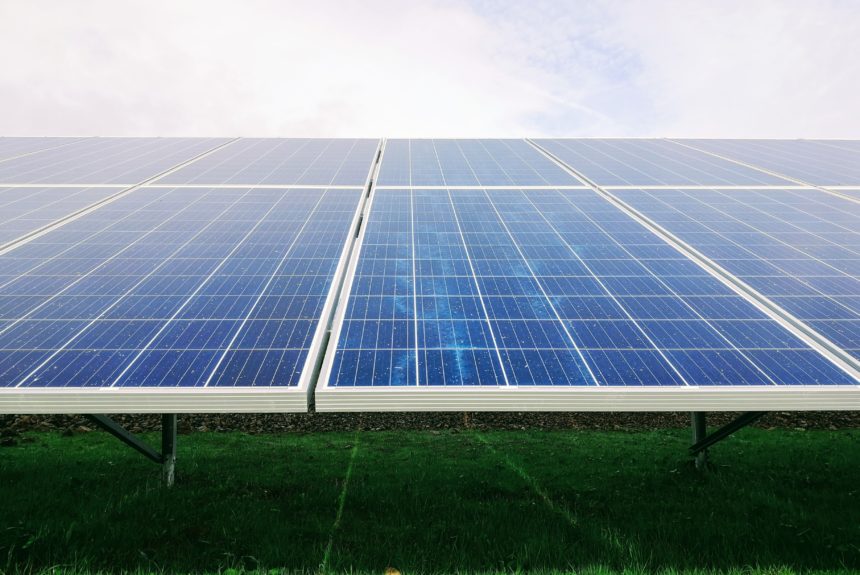As the price of renewables continues to fall, investment in clean energy makes more sense than ever. Enter Cochin International Airport in southern India, the world’s first fully solarized airport.
The airport’s microgrid, completed in 2015, hosts over 46,000 solar panels and provides an emissions savings of 300,000 metric tons of carbon, or the equivalent of planting three million trees. In addition to rendering the facility fully self-sufficient, the airport also provides surplus power for the state grid.
The airport is the seventh-largest in India, hosting 27 airlines and over ten million passengers per year. The idea for an entirely solar-powered facility arose from a discussion regarding the best way for the airport to save on its utility bill.
“When we realized that our power bill is on the higher side, we contemplated possibilities,” said VJ Kurian, managing director of the Cochin International Airport Limited. “We consume around 48,000 units (kWh) a day. So, if we can produce the same, that too by adhering to the sustainable development model, we could send a message to the world.”
The airport initially dedicated space for 400 solar panels in 2013 as a trial run. When the mini solar site proved profitable, officials organized a bid to convert 45 acres of former cargo handling space towards the renewable energy project. A German engineering firm won the tender to construct a 12-megawatt solar power plant.
By 2018, the plant began producing enough energy for the airport to recover its initial building costs.
Can we engineer the same kind of resilient and cost-efficient clean energy systems right here in the United States?
Much of the challenge comes down to cost. Over the last decade, the price of renewables has been falling consistently–often rivaling the competitiveness of fossil fuels and even becoming cheaper than mainstream technologies. In 2017, the cost of installing new wind and solar facilities made them the most affordable available energy source in the country–and cheaper than running existing coal-fired power plants.
Renewables continue to demonstrate their cost-competitiveness with conventional technologies to date. According to Lazard’s latest annual Levelized Cost of Energy Report, the cost of installing onshore wind and utility-scale solar facilities now rivals the marginal cost of maintaining existing coal, nuclear, and combined-cycle gas sites, due in part to subsidies for renewable power sources.
So in terms of profit, the momentum is undoubtedly on clean energy’s side. But making entire facilities solar-powered is easier said than done.
For starters, there are plenty of safety regulations doled out by the Federal Aviation Administration regarding installing panels, including the requirement that the panels be glare-proof and capable of non-interference with radar.
Lodging panels on existing roofs could also require an overhaul of the older structures, which may increase project-related costs. Fortunately, architects and planners can integrate solar functionality right into the layout of new airport buildings. This planning will help engineers design rooftops with solar panels in mind instead of simply retrofitting older edifices.
For buildings that are too old to withstand modification, there is also the option of simply deploying panels on the ground. This is especially useful for airports with lots of empty space at their disposal, like Denver International Airport (DIA). For airports lacking such large swaths of open room, the more realistic option remains rooftops.
A final point to take into consideration is the shifting nature of clean energy. Relying on solar as the primary power supply may be a big bet, as the amount of energy harvested in a day is only ever predictable up to a degree. Planning officials must recognize the value of maintaining their physical ties to the larger grid and imagine solar more as a complement to an airport’s energy infrastructure instead of its primary power source.
Still, the costs of solar are making storage a growing option for many airports. Officials in Pittsburgh International Airport (PIT), for example, are constructing the first-of-its-kind electrical microgrid capable of independently running the facility. The airport would deploy giant solar batteries capable of serving the facility or stockpiling the excess energy. The project is set to be complete this summer.
“It’s a major milestone. We are leveraging the talents and skills of our local workforce and partners to create an energy source that is resilient and sustainable. Pittsburgh International will be one of the most site-hardened airports in the world,” the airport’s Vice President of Engineering, Tom Woodrow, told Blue Sky News.
The final microgrid will supply the facility with 21 megawatts of electricity, or enough to power over 13,000 residential homes, notes the airport’s official news page.
The best part about microgrids is they combine the sustainability of solar with the ease of conventional technologies.
“We can island and microgrid our buildings and leverage that renewable energy across different periods of the day,” says Erin Cooke, the director of sustainability at San Francisco International Airport. (The airport is currently reviewing the possibility of installing a microgrid on the site.)
Indeed, one of the most appealing factors of microgrid technology is its ability to offer energy self-sufficiency for the aviation industry. Officials can leverage solar to achieve energy independence for their facilities or act as a supplementary energy source towards the larger grid.
The potential for microgrids is not just limited to airports. Other prospective recipients of the technology include high-stakes facilities like data centers and hospitals, government agencies, affordable housing developments, community-scale microgrids like Santa Monica’s innovative City Yards Project, and higher education.
Solarized airports are not just good for the wallet; they are good for the environment too. Expect to see more airports going solar the next time you’re booking a flight.
Nathalie Voit is a freelance content creator and a graduate of the University of Florida. She is an alumna of The Heritage Foundation’s Young Leaders Program.
The views and opinions expressed are those of the author’s and do not necessarily reflect the official policy or position of C3.
